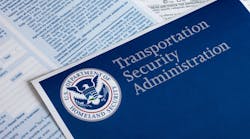Federal rules governing commercial driver hours-of-service (HOS) claimed the top position in 2013 after ranking second in 2012 and 2011. The high level of concern over HOS stems primarily from the December 2011 Final Rule issued by the Federal Motor Carrier Safety Administration (FMCSA) which changed several key provisions in the HOS.
After a contentious period of debate, the changes went into effect on July 1, 2013. The new rules limit use of the 34-hour restart and require a minimum 30-minute break before driving after eight hours on-duty. Many in the industry believe that these new HOS rules will have a negative impact on productivity.
Additionally, there are concerns that the safety benefits that FMCSA expects these changes to generate will not materialize. A study by ATRI on the changes to the 34-hour restart provision projected that the restart changes alone would cost the industry $189 million dollars, as opposed to the $133 million benefit projected by FMCSA. A majority of survey respondents (58%) list this as their first, second or third most important issue.
HOS exemptions for certain oilfield operations also created plenty of concern and confusion for fleets and the companies that support drilling and production operations in the oil patch.
Proposed Strategies (in rank order):
a) Quantify the impacts of 2013 HOS changes on industry operations, productivity and safety. Nearly 40% of respondents feel this strategy would be most effective for addressing HOS concerns. ATRI is currently studying the impacts that the HOS changes are having on productivity through data collection efforts aimed at drivers and motor carriers.
b) Research and advocate for more innovative and flexible strategies for fatigue management than prescriptive HOS rules. The core purpose of the HOS rules is to minimize the impact of driver fatigue in crashes and other workplace injuries. With over 3.1 million truck drivers, many in the industry, including the 30.1% of respondents who rank this strategy first, feel that a one-size-fits-all HOS approach may not provide enough flexibility to meet the needs of such a large and diverse industry.
c) Advocate for increased flexibility in the current sleeper berth provision. Nearly one-third (30.9%) of respondents rank this strategy first. Over the past several years, there have been complaints by some drivers who believe that the sleeper berth rules are too restrictive and do not allow drivers the flexibility to rest when they are tired.









